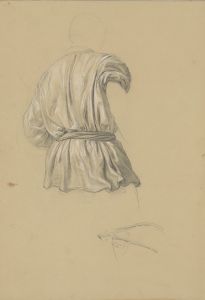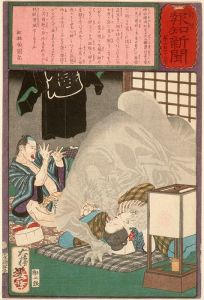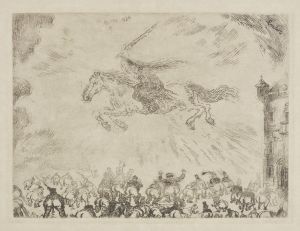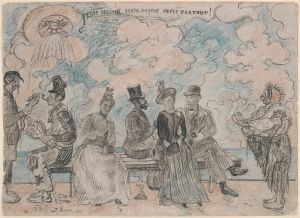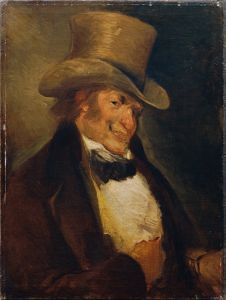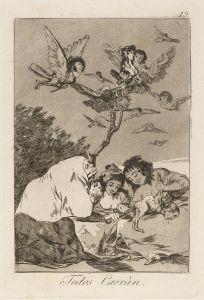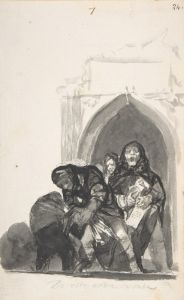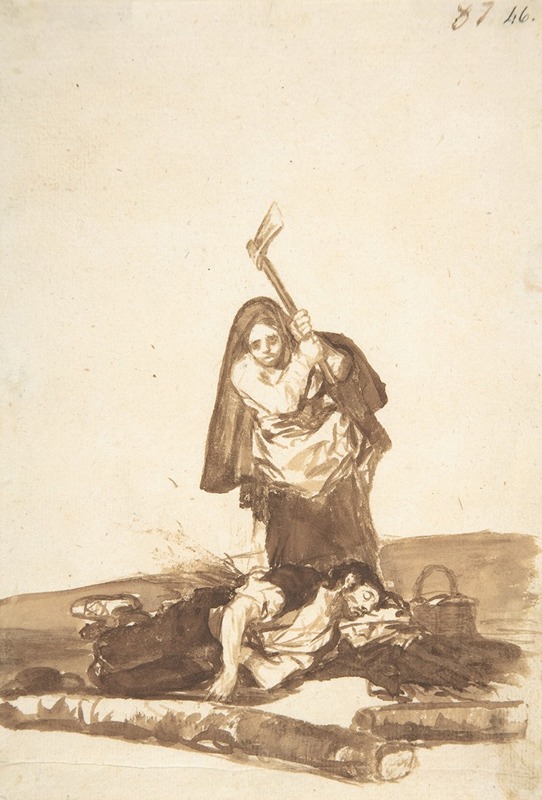
A woman about to attack a sleeping man with an axe
A hand-painted replica of Francisco de Goya’s masterpiece A woman about to attack a sleeping man with an axe, meticulously crafted by professional artists to capture the true essence of the original. Each piece is created with museum-quality canvas and rare mineral pigments, carefully painted by experienced artists with delicate brushstrokes and rich, layered colors to perfectly recreate the texture of the original artwork. Unlike machine-printed reproductions, this hand-painted version brings the painting to life, infused with the artist’s emotions and skill in every stroke. Whether for personal collection or home decoration, it instantly elevates the artistic atmosphere of any space.
Francisco de Goya, a prominent Spanish painter and printmaker, is renowned for his profound impact on the art world during the late 18th and early 19th centuries. One of his lesser-known works is "A Woman About to Attack a Sleeping Man with an Axe," a painting that reflects Goya's exploration of darker themes and his interest in the complexities of human nature. This work is part of Goya's broader oeuvre that often delves into the macabre and the unsettling aspects of human behavior.
Goya's career spanned a tumultuous period in Spanish history, marked by political upheaval and social change. His art evolved from the Rococo style of his early works to a more personal and expressive form, often characterized by a critical view of society and a fascination with the grotesque. "A Woman About to Attack a Sleeping Man with an Axe" fits within this later period of Goya's work, where he frequently depicted scenes of violence, madness, and the supernatural.
The painting itself portrays a dramatic and tense moment: a woman poised to strike a sleeping man with an axe. The composition is stark and direct, focusing on the imminent act of violence. Goya's use of light and shadow enhances the sense of foreboding, drawing the viewer's attention to the woman's determined expression and the vulnerability of the sleeping man. This scene captures the viewer's imagination, prompting questions about the motivations and backstory of the characters involved.
Goya's interest in such themes can be linked to his personal experiences and the broader context of his time. The late 18th and early 19th centuries in Spain were characterized by political instability, war, and social unrest. Goya himself experienced significant personal challenges, including a severe illness that left him deaf. These experiences may have influenced his artistic focus on the darker aspects of human existence and the capacity for violence and cruelty.
While specific details about the painting's creation and its intended meaning are not well-documented, it is consistent with Goya's exploration of the human psyche and the darker sides of life. His works often serve as a reflection of the anxieties and fears of his era, as well as a critique of societal norms and behaviors.
Goya's legacy is marked by his ability to capture the complexities of human emotion and the darker facets of human nature. "A Woman About to Attack a Sleeping Man with an Axe" is a testament to his skill in conveying tension and drama through his art. Although not as widely recognized as some of his other works, this painting contributes to our understanding of Goya as an artist unafraid to confront the unsettling and the unknown.
In summary, Francisco de Goya's "A Woman About to Attack a Sleeping Man with an Axe" exemplifies his fascination with the darker elements of human behavior and his ability to evoke strong emotional responses through his art. The painting remains a compelling example of Goya's unique artistic vision and his enduring influence on the world of art.





